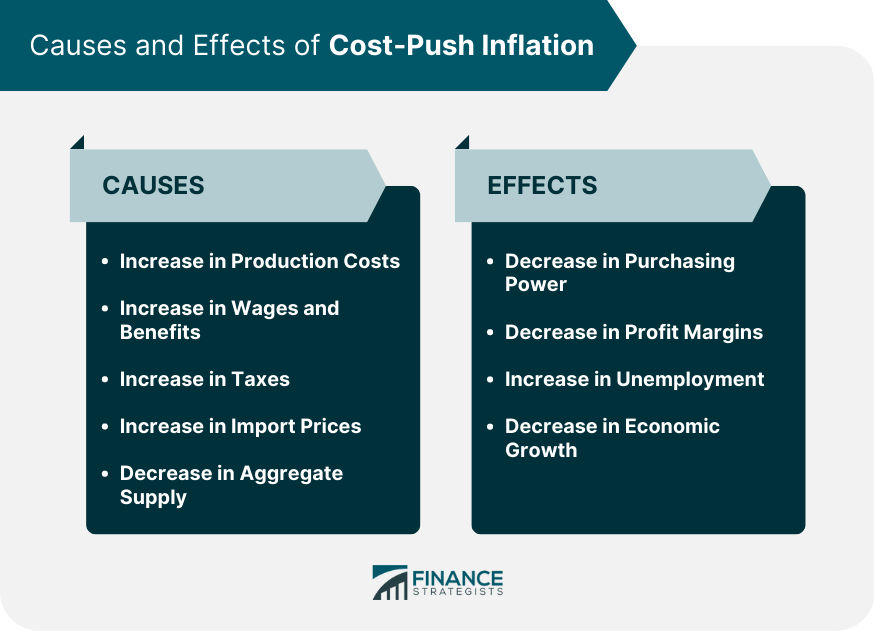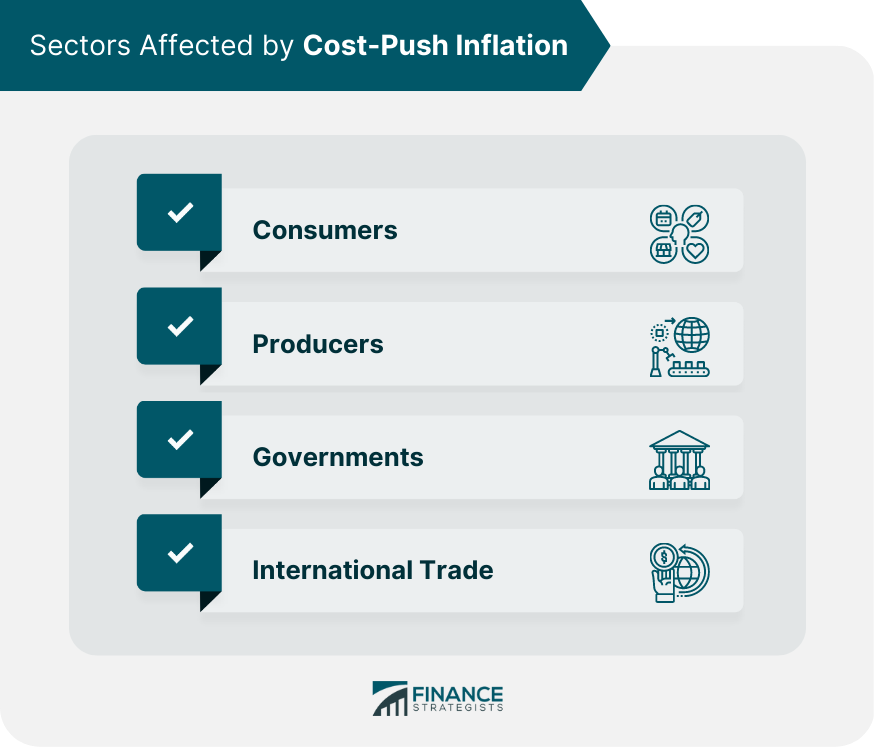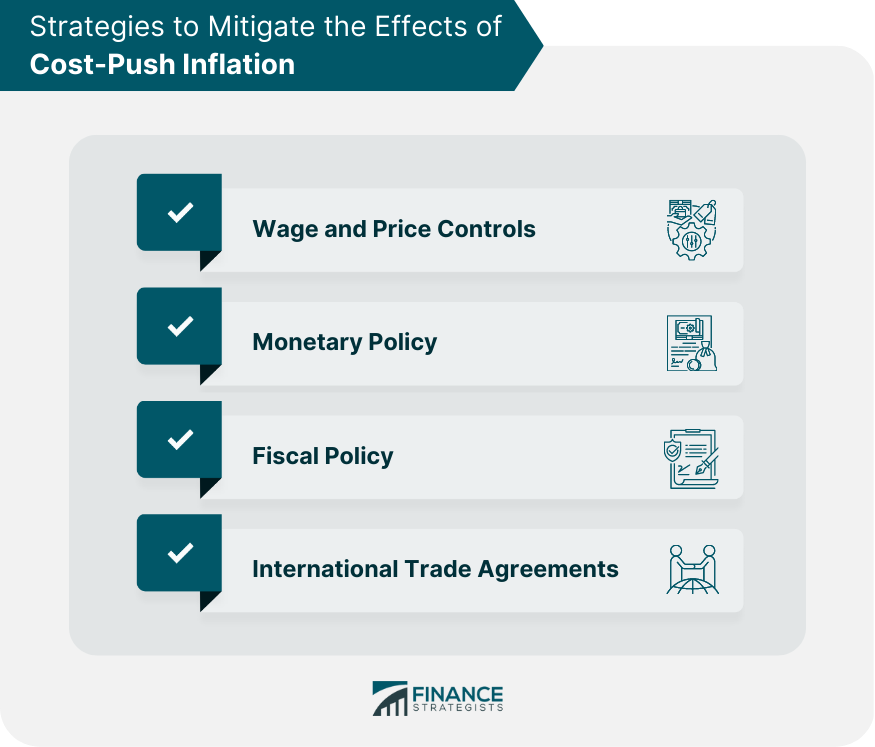Cost-push inflation is a type of inflation that arises from increased costs of production, leading to higher prices of goods and services. It is a significant economic phenomenon that can have far-reaching effects on various sectors of the economy, including consumers, producers, and governments. Cost-push inflation can have a severe impact on the economy, leading to a decrease in the purchasing power of consumers, decreased profit margins for businesses, an increase in unemployment, and a decrease in economic growth. Understanding cost-push inflation is crucial for policymakers to create effective policies to mitigate the negative impacts of this phenomenon. Businesses also need to understand cost-push inflation to develop strategies that will enable them to maintain their competitiveness in the market. Cost-push inflation can occur in various industries, including the energy sector, agricultural sector, and manufacturing sector. For example, an increase in the price of crude oil can lead to an increase in the production cost of goods and services, leading to cost-push inflation in the energy sector. Similarly, a rise in wages and benefits in the agricultural sector can lead to cost-push inflation in that sector. Several factors can lead to cost-push inflation. The following are some of the common causes of cost-push inflation: One of the significant causes of cost-push inflation is an increase in production costs, such as raw materials and energy. For example, an increase in the price of crude oil can lead to a rise in transportation and production costs, leading to an increase in the price of goods and services. An increase in wages and benefits can also lead to cost-push inflation. When workers demand higher wages, businesses may increase the price of their goods and services to cover the additional cost of labor. An increase in taxes can lead to cost-push inflation as businesses may pass on the increased tax burden to consumers through higher prices of goods and services. An increase in the price of imported goods can also lead to cost-push inflation. When the price of imported goods increases, the cost of production of goods and services that rely on those imports also increases, leading to higher prices. A decrease in aggregate supply can lead to cost-push inflation. When the supply of goods and services decreases, the demand for those goods and services may remain the same or increase, leading to an increase in their prices. Cost-push inflation can have significant negative effects on the economy. The following are some of the effects of cost-push inflation: Cost-push inflation can lead to a decrease in the purchasing power of consumers. As the price of goods and services increases, consumers may have to spend more to maintain their standard of living. Cost-push inflation can also lead to a decrease in the profit margins of businesses. When the cost of production increases, businesses may not be able to pass on the entire cost to consumers, leading to lower profit margins. Cost-push inflation can lead to an increase in unemployment. When businesses face higher production costs, they may reduce their production levels, leading to layoffs and a decrease in employment opportunities. Cost-push inflation can lead to a decrease in economic growth. When the cost of production increases, businesses may not be able to expand their production levels, leading to a decrease in overall economic activity. Cost-push inflation can affect various sectors of the economy differently, depending on the nature of their business and the extent of their exposure to the factors causing cost-push inflation. The following are some of the sectors that are affected by cost-push inflation: Consumers are directly affected by cost-push inflation as they face higher prices of goods and services. When the prices of essential goods and services increase, consumers may have to cut back on their spending on other goods and services, leading to a decrease in economic activity. Producers are also affected by cost-push inflation as they face higher production costs. When the cost of production increases, businesses may not be able to maintain their profit margins or compete effectively in the market, leading to a decrease in their overall production levels. Governments are indirectly affected by cost-push inflation as they face higher costs of providing goods and services. When the cost of production increases, governments may have to increase their spending on subsidies or welfare programs to support consumers or businesses affected by cost-push inflation. Cost-push inflation can also affect international trade as it can lead to an increase in the prices of exported goods and services. When the prices of exported goods and services increase, they may become less competitive in the international market, leading to a decrease in exports and a decrease in overall economic activity. Several strategies can be employed to mitigate the negative effects of cost-push inflation. The following are some of the strategies: Wage and price controls are one of the common strategies employed to mitigate the effects of cost-push inflation. Wage and price controls involve setting a limit on the increase in wages and prices of goods and services. However, wage and price controls can have unintended consequences, such as supply shortages and decreased economic activity. Monetary policy is another strategy that can be used to mitigate the effects of cost-push inflation. Central banks can increase interest rates to reduce the demand for credit, leading to a decrease in inflation. However, higher interest rates can also lead to a decrease in economic activity. Fiscal policy is another strategy that can be used to mitigate the effects of cost-push inflation. Governments can reduce taxes or increase spending to increase aggregate demand, leading to a decrease in inflation. However, fiscal policy can also lead to an increase in the budget deficit. International trade agreements can also be used to mitigate the effects of cost-push inflation. Trade agreements can provide a framework for reducing trade barriers and increasing the flow of goods and services, leading to increased competition and lower prices. Cost-push inflation is a significant economic phenomenon that can have far-reaching effects on various sectors of the economy. Understanding the causes, effects, and mitigation strategies of cost-push inflation is essential for policymakers, economists, businesses, and individuals alike. To mitigate the negative effects of cost-push inflation, policymakers can employ strategies such as wage and price controls, monetary policy, fiscal policy, and international trade agreements. However, policymakers must consider the potential unintended consequences of these strategies and their long-term sustainability.What Is Cost-Push Inflation?
Causes of Cost-Push Inflation
Increase in Production Costs
Increase in Wages and Benefits
Increase in Taxes
Increase in Import Prices
Decrease in Aggregate Supply
Effects of Cost-Push Inflation
Decrease in Purchasing Power
Decrease in Profit Margins
Increase in Unemployment
Decrease in Economic Growth

Sectors Affected by Cost-Push Inflation
Consumers
Producers
Governments
International Trade

Strategies to Mitigate the Effects of Cost-Push Inflation
Wage and Price Controls
Monetary Policy
Fiscal Policy
International Trade Agreements

Final Thoughts
To know more about cost-push inflation, you may consult professionals who specialize in tax services.
Cost-Push Inflation FAQs
Cost-push inflation is a type of inflation that arises from increased costs of production, leading to higher prices of goods and services.
Some common causes of cost-push inflation include an increase in production costs, wages and benefits, taxes, import prices, and a decrease in aggregate supply.
Cost-push inflation can lead to a decrease in the purchasing power of consumers as the price of goods and services increases, leading to increased costs to maintain their standard of living.
Businesses can develop strategies that will enable them to maintain their competitiveness in the market, such as optimizing their production processes, seeking alternative suppliers, and increasing productivity and efficiency.
Governments can employ various strategies such as wage and price controls, monetary policy, fiscal policy, and international trade agreements to mitigate the negative effects of cost-push inflation. However, policymakers must consider the potential unintended consequences of these strategies and their long-term sustainability.
True Tamplin is a published author, public speaker, CEO of UpDigital, and founder of Finance Strategists.
True is a Certified Educator in Personal Finance (CEPF®), author of The Handy Financial Ratios Guide, a member of the Society for Advancing Business Editing and Writing, contributes to his financial education site, Finance Strategists, and has spoken to various financial communities such as the CFA Institute, as well as university students like his Alma mater, Biola University, where he received a bachelor of science in business and data analytics.
To learn more about True, visit his personal website or view his author profiles on Amazon, Nasdaq and Forbes.















